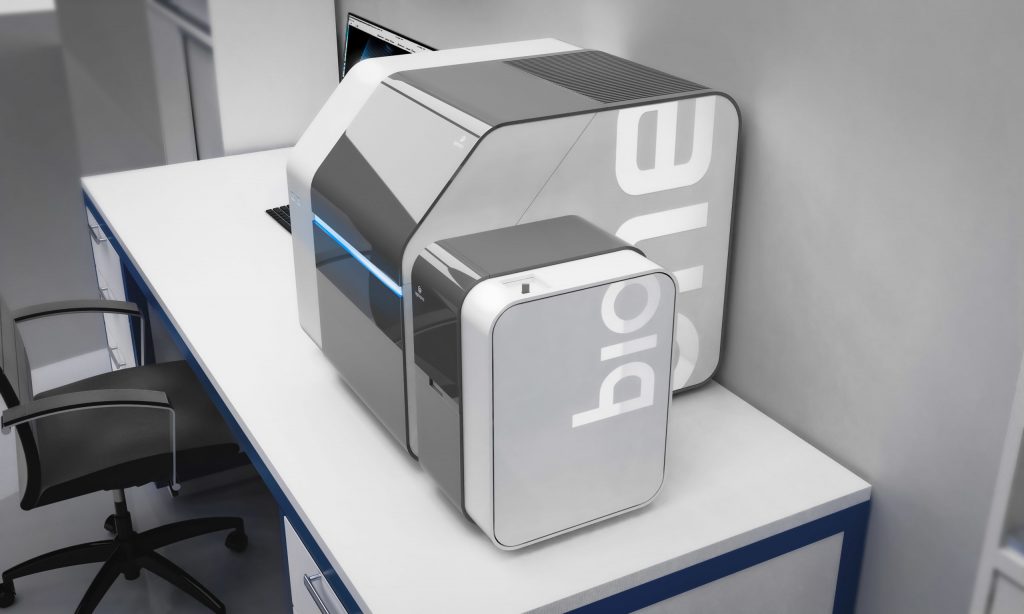April was broadly a month of change for 3D printing, with the introduction of new technologies, ever-larger and more ambitious prints and fresh takes on everything from supply chain security to cultured meat dominating the headlines.
Read on for the standout developments in April from BEAMIT, Materialise, UpNano, EOS, Xometry, Shapeways, SLM Solutions, Ingersoll Machine Tools, In-Vision, Covestro, Weber Beamix, MeaTech and more.

The Ever Given continues to disrupt
Following the mishaps of a certain container ship called the Ever Given in late-March, which caused massive disruption to global supply chains, early-April was a period of reflection for many manufacturers. In particular, some of those affected by the shipping crisis began to reconsider how they source and transport their goods, with many 3D printing firms seeing this as an opportunity.
Speaking to 3D Printing Industry, Xometry’s Director of Application Engineering Greg Paulsen said “the ability to seamlessly source the same parts from multiple suppliers in a network, provides both a parallel capacity advantage as well as geographic flexibility,” and 3D printing could have a vital role to play in this.
According to Ward Ripmeester of 3D printing service provider Shapeways, however, “AM is hard with a high barrier to entry, especially for companies that have been slow to adopt digital manufacturing.” As a result, he explained how the firm has set out to “simplify these complexities by helping enterprises worldwide make the shift to digital manufacturing,” via its purpose-built software platform.
Climate initiatives progress
In tandem with other disruptive goings-on, such as Brexit and the ongoing pandemic, the Ever Given shipping crisis also caused many to consider whether it was worth going back to the old way of doing things. With this in mind, 3D printer manufacturer EOS agreed to take part in the 50 Sustainability and Climate Leaders initiative in mid-April, in a bid to set out a plan for reducing the industry’s emissions.
At the time, the company’s CEO Marie Langer said that “sustainable thinking has always been in its DNA” and that “it has the innovative power and mindset to make a difference.” To help bring about this fundamental change, Langer, therefore, called on the firm’s “partners and customers to join it on its journey, and support its goal of establishing responsible manufacturing as the new normal.”
Likewise, later in the month, the US Department of Energy (DOE) revealed that it would be pouring $6 million into projects investigating the potential of turning coal into 3D printable materials. The funding awardees have since started working with the National Energy Technology Laboratory to progress their technologies, which were earmarked at the time for deployment in ‘economically-distressed’ areas.

2021: year of the cultured meat
April also saw the continuation of another disruptive trend in the 3D printing industry: the ongoing growth in the commercial viability of cultured meat products. During the month, Israel-based MeaTech revealed that it had completed its acquisition of Peace of Meat, in a deal that would allow it to begin developing cultured avian-based fat products.
Alongside the publication of its FY 2020 financial results, the company disclosed that it had raised a total of $28 million via its Nasdaq listing as well, generating funding it would go on to plow into fleshing out its marketable product lineup throughout the year.
“We are pleased with our execution throughout 2020,” the firm’s CEO Sharon Fima explained back in April. “The world is looking for more sustainable agriculture practices, and we believe cultured meats – created without slaughtering livestock – can be a significant advancement towards that goal.”
Large-format AM scales again
3D printing’s more conventional technologies also began to scale new heights in April 2021, with several novel large-format metal prints and concrete structures being unveiled over the course of the month. One such project saw SLM Solutions work with Safran Landing Systems to 3D print a novel piece of lightweighted business jet landing gear.
In another, Ingersoll Machine Tools partnered with aviation firm Bell to 3D print a 22 foot-long vacuum trim tool, designed for the molding of helicopter rotor blades. Carried out using Ingersoll’s gantry-based MasterPrint 3D printer, complete with 5-axis milling functionality, the project was said to yield a part with the same integrity and resilience as before, while generating major lead-time savings.
Ingersoll CEO Chip Storie described the MasterPrint’s progress as “relentless” at the time, while suggesting that its short-term aims for the machine were to “3D print molds for aerospace that preserve the geometrical properties and tolerances, vacuum integrity and autoclave resilience normally obtained with traditional technology, but with the cost and time reduction only AM can offer.”
Lastly, in 3D printing’s construction segment, BAM and Weber Beamix announced that they too intended to stretch the limits of their technologies, by building the world’s longest printed pedestrian bridge. Five months later, the firms confirmed that they had completed the 29.5 meter-long structure, which reportedly broke the old record held by Tsinghua University, and its 86-foot concrete bridge in Shanghai.

In-Vision and UpNano unveil new tech
Elsewhere, one of April’s standout tech launches came from Austrian optical device developer In-Vision, which unveiled its first 4K UV light projector for use with resin-based DLP 3D printers. Known simply as ‘Phoenix,’ the firm’s new light engine was specifically built to address the needs of industrial OEMs that require their machines to have higher light intensities and be capable of more rapid cure times.
“We are constantly striving to improve the optics on our projectors, especially the light transmission because the light intensity is very critical for our customers,” Florian Zangerl, CEO of In-Vision explained at the time. “I have to admit that I’m proud of what we achieved with the Phoenix.”
That month, Two-Photon Polymerization (2PP) 3D printer manufacturer UpNano also announced a dramatic change of direction, with the release of its first 3D bioprinter: the NanoOne Bio. The machine was not only said to be capable of producing 3D tissue structures at a nanoscale, but it launched alongside a custom Xpect INX bio-ink, which allowed users to deposit cells directly into it.
“The combined competences of UpNano in developing 3D printing devices and Xpect INX in designing innovative materials for 3D bioprinting gelled well together,” UpNano Co-founder Peter Gruber said of the new launches. “We co-developed X Hydrobio INX U200, a highly biocompatible hydrogel, and at the same time we offer a Two-Photon 3D printing device that provides the largest range of printed dimensions on the market.”

3D printing consolidation continues
Finally, in our April round-up, 3D printing’s acquisition-loaded business year continued with several major moves being announced. One of the first to be finalized was Covestro’s purchase of DSM’s 3D printing division, in a deal that the acquired additive manufacturing arm’s Equipment Partnership Manager, Andrew Graves, claimed at the time would help “bring the benefits of SLA to DLP” users.
Belgian 3D printing software and service provider Materialise also revealed that it had acquired the right to buy Link3D. Initially forecast to help Materialise round off its cloud platform and expand its user base in North American, European, and Asian Pacific markets, the deal eventually went through five months later in November.
Similarly, on the service bureau front, the BEAMIT Group announced the purchase of 3T Additive Manufacturing from parent company AM GLOBAL during April. BEAMIT’s President Mauro Antolotti hailed the move, saying that it opened up “new ways for it to leverage synergies,” while the firm itself described it as a first step on its expansion roadmap, that allowed its capacity to rise to over 10,000 parts per year.
Antolotti added: “We are now more well equipped than ever, having consolidated and strengthened our AM service offering, established a footprint in the UK, and prepared for further expansion and growth with our customers in the coming years.”

To stay up to date with the latest 3D printing news, don’t forget to subscribe to the 3D Printing Industry newsletter or follow us on Twitter or liking our page on Facebook.
For a deeper dive into additive manufacturing, you can now subscribe to our Youtube channel, featuring discussion, debriefs, and shots of 3D printing in-action.
Are you looking for a job in the additive manufacturing industry? Visit 3D Printing Jobs for a selection of roles in the industry.
Featured image shows the Ever Given container ship that got trapped in the Suez Canal during late-March 2021. Image via Freightwaves.


